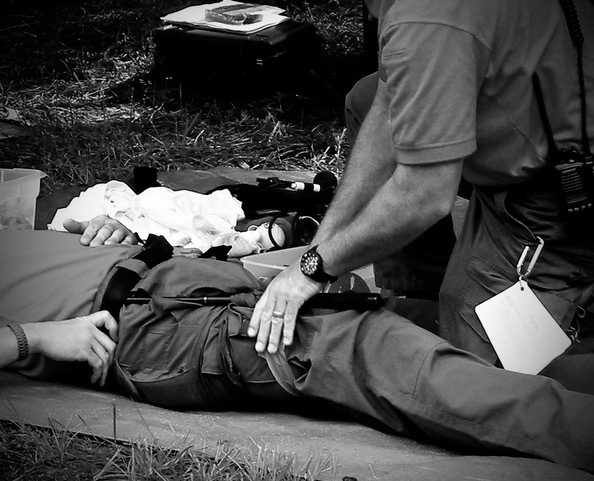
There are several things that have always been required of a responsible individual. You’re the person that acquires food and shelter, provides security from outside threats, and safety – for example being prepared for a traumatic medical emergency. As a group, the Wire’s reader focus heavy on firearms use for defense – and other “fun” applications. Just as important, or possibly more so, is the ability to deal with medical emergencies.
As humans became more civilized, living in larger groups for obvious advantages, individuals began to shift their responsibilities to “specialists” – if make money to buy food, you don’t have to gather or hunt. Armed professionals provide security, both domestically and internationally. Safety – when you need emergency medical assistance, you call and help will arrive. Only now, as things become more “civilized” – an increase in violence and the latest “protests” - we’re discovering assistance may take a while. During a medical emergency – if you don’t do something right now someone dies - time is a precious commodity.
The riots have completely blocked the streets. The system is overwhelmed with calls; emergency personnel may arrive in a timely fashion. Heavy gunfire is preventing any response. In other words, “It’s up to you.” The knowledge, skills and gear necessary to deal with a trauma emergency are not that complicated. The fundamentals are (1) stop the bleeding, (2) keep them breathing and (3) prevent them from going into shock.
For bleeding you need a tourniquet. If you don’t have anything else, this is mandatory; they save lives constantly. “But,” you say, “I learned how to make improvised tourniquets.” While this is good knowledge, sometimes there won’t be anything to improvise with. Tourniquets are small, so they’re easily carried. There’s even ankle “holsters” for your tourniquet. You need one when you go to the range, use the chainsaw, ride a motorcycle or anything else “dangerous.” In other words, you have one with you at all times.
Application of the tourniquet is easy. “Go high or die.” Get it positioned as high up on the limb as possible. “Tight is right.” Tighten it down, and then tighten some more. When the recipient starts screaming about how tight it is, cinch it down some more. And do not release pressure; tourniquets can stay on for a long time before causing tissue damage.
Next is an “H” or “battle bandage.” Wrap the wound tight, packing material into the wound as needed. The bandage also applies pressure to control blood loss. A battle wrap is easy to carry and apply, and it works great. My advice is to remove the bandage from its packaging, which is usually difficult to open, and put it in a zip-lock bag, so it’s easy to access. You don’t have to worry about it being sterile – when real help is available they’ll have antibiotics. You’ll need trauma shears. Using your tactical blade to cut clothing off someone who is jerking all about from injury and pain isn’t a good idea. The trauma shears are heavy duty, which you’ll need for removing blue jeans, tactical belts and other clothing so you can actually get the tourniquet and bandage applied.
Shears, tourniquet and bandage form the basics of your kit. It’s a good idea to have a light source – I like the glow sticks, which give off light in 360 degrees, and you can hold them in your mouth while working with both hands. There may be other pieces of gear you need, according to your life. For example the standard tourniquet with windlass usually doesn’t work that well on small children. For this you need a tourniquet that resembles a large rubber band. If any of your team requires special medical items, put them in your kit. Everyone should know CPR. (Standard first aid items, like band aids and such, are stored in a different kit.) Just remember to keep your trauma kit simple and lightweight, so it travels easy.
Dealing with trauma isn’t that difficult. You need the proper gear, and like all other skills get training so you know how to use it. Then, remember there’s no substitute for practice, repetition so you can apply “first” aid, under stress and maybe less than ideal conditions. There is a chance you may need to use your firearm in defense. The chances are much greater you’ll need medical.
Start preparing now.
Tiger McKee is director of Shootrite Firearms Academy, which is celebrating its twenty-fifth anniversary. He is the author of The Book of Two Guns, AR-15 Skills and Drills, has a regular column in American Handgunner and makes some cool knives and custom revolvers. Visit Shootrite’s Facebook page for other details.